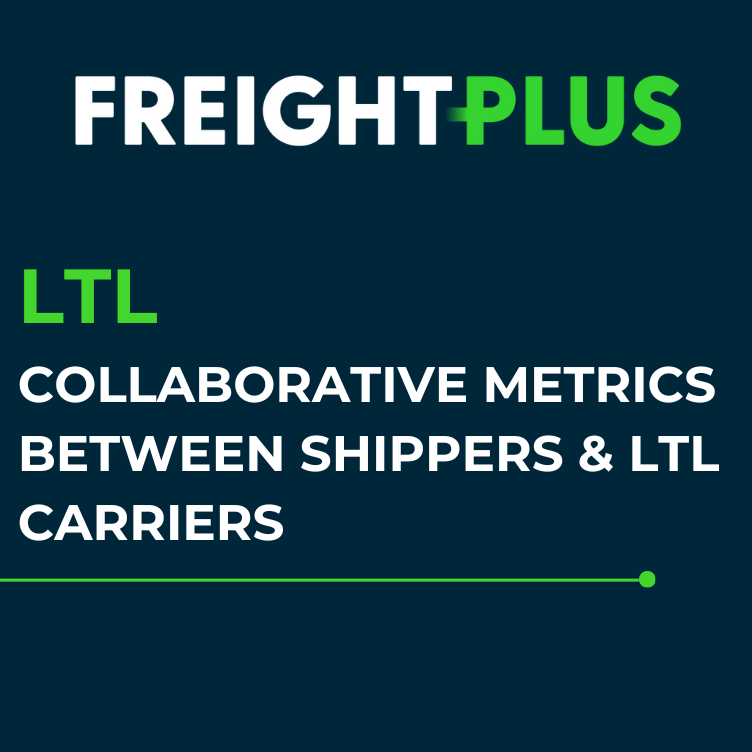The relationship between shippers and Less Than Truckload (LTL) carriers has historically been a complex one. Traditionally, the approach was straightforward – shippers aimed to cut costs by negotiating aggressively, often resorting to a ‘beat them over the head’ strategy. However, this outdated mindset is undergoing a paradigm shift.
The Outdated Approach: “Beating Carriers Over the Head”
The once-prevailing tactic of driving cost savings at the expense of carriers’ profitability and service quality is proving to be an unsustainable strategy. This adversarial approach often results in strained relationships, subpar service, and an industry-wide focus solely on cutting expenses.
It used to be shippers had a good handle on carrier performance, and then they would use that to tell the carrier they were underperforming and therefore charging too much. At FreightPlus what we’re seeing now is carriers do a far better job of measuring shippers’ performance than the shippers do the carriers.
The Paradigm Shift: Embracing Partnership
A new era is here, one that prioritizes collaboration and partnership between shippers and LTL carriers. The key lies in redefining success metrics. Instead of fixating solely on pick up / drop times and cost reduction, the focus is shifting towards metrics that foster collaboration and attractiveness for shippers’ freight.
Instead of saying “the market is soft and I’d like better pricing,” Try this:
Take two weeks to track and log your LTL drivers in and out times. Take a detailed step-by-step of what happened – quantify the experience over that time. This will allow you to gain a sense of the average dwell times of your LTL Carriers. Once you have a good understanding of the baseline, this will allow you to identify ways to improve their in and out times. These can be improvements like:
- Having paperwork ready before the carrier arrives
- Integrating in technologies your carriers are using
- Switching to bar code and QR code scanning technology
Then, measure your carrier partners again. This partnership approach will allow for more productive conversations with your carrier partners.
Collaborative Performance Metrics
What else does this partnership-driven approach entail? It involves a fundamental shift towards metrics that benefit both parties. From on-time delivery rates and freight integrity to efficient loading and unloading processes, these metrics incentivize carriers to prioritize quality service, while shippers benefit from reliability and enhanced service levels.
Example metrics:
- On-Time Delivery (OTD) Performance: This metric focuses on the carrier’s ability to consistently meet scheduled delivery times. Shippers benefit from reliable deliveries, ensuring their goods arrive on schedule, while carriers aim to maintain high OTD rates to demonstrate reliability.
- Freight Integrity: Metrics tracking freight integrity, including damage rates and the condition of goods upon delivery, are crucial. Shippers benefit from reduced damage to their products, while carriers strive to handle shipments carefully to maintain a high freight integrity metric.
- Efficient Loading and Unloading Time: This metric evaluates the time it takes for carriers to load and unload shipments. Shippers benefit from quicker turnaround times, reducing wait times and improving efficiency, while carriers optimize their operations to minimize dwell times and increase capacity utilization.
- Communication and Response Time: Metrics related to communication effectiveness and response times between shippers and carriers are important. Prompt and clear communication enhances efficiency and problem-solving, benefiting both parties by reducing delays and improving overall service levels.
- Capacity Utilization and Fill Rates: This metric assesses how efficiently carriers utilize their truck space. Shippers benefit from optimized use of available capacity, reducing costs per shipment, while carriers aim for higher fill rates to maximize revenue per trip.
- Cost Per Mile and Total Cost of Transportation: Collaborative metrics can also include cost-related measures. While cost reduction shouldn’t be the sole focus, evaluating cost per mile or total transportation costs against service quality helps both shippers and carriers find a balance between efficiency and profitability. Our recent webinar, “Composition of an LTL Freight Rate” outlines in depth the factors that contribute to the composition of an LTL freight rate. View here.
- Sustainability Metrics: In an time where sustainability is increasingly crucial, metrics related to carbon emissions, fuel efficiency, and environmentally friendly practices can be collaborative. Shippers seeking eco-friendly transportation methods can partner with carriers committed to sustainability, aligning their goals for a greener supply chain.
The advantages of this approach are substantial. Shippers experience improved reliability and service quality, reducing the risk of disruptions. Carriers, on the other hand, find increased profitability and long-term relationships.
The era of ‘beating carriers over the head’ for cost savings is fading. Instead, a new era of collaboration and partnership is emerging, redefining success in the freight industry. Shippers and LTL carriers alike are discovering that by working together and adopting collaborative performance metrics, they pave the way for sustainable growth and mutual success.
Don’t settle for strained relationships and subpar service. It’s time to abandon the traditional approach and embrace a new era of collaboration. At FreightPlus our fully customized managed transportation services are geared towards fostering partnerships with shippers and carriers like you, driving mutual success. Want to connect with FreightPlus? Contact us to schedule time.
For Shippers
Are you looking to connect with a sales representative?
For Carriers
Are you looking to become a FreightPlus carrier?



